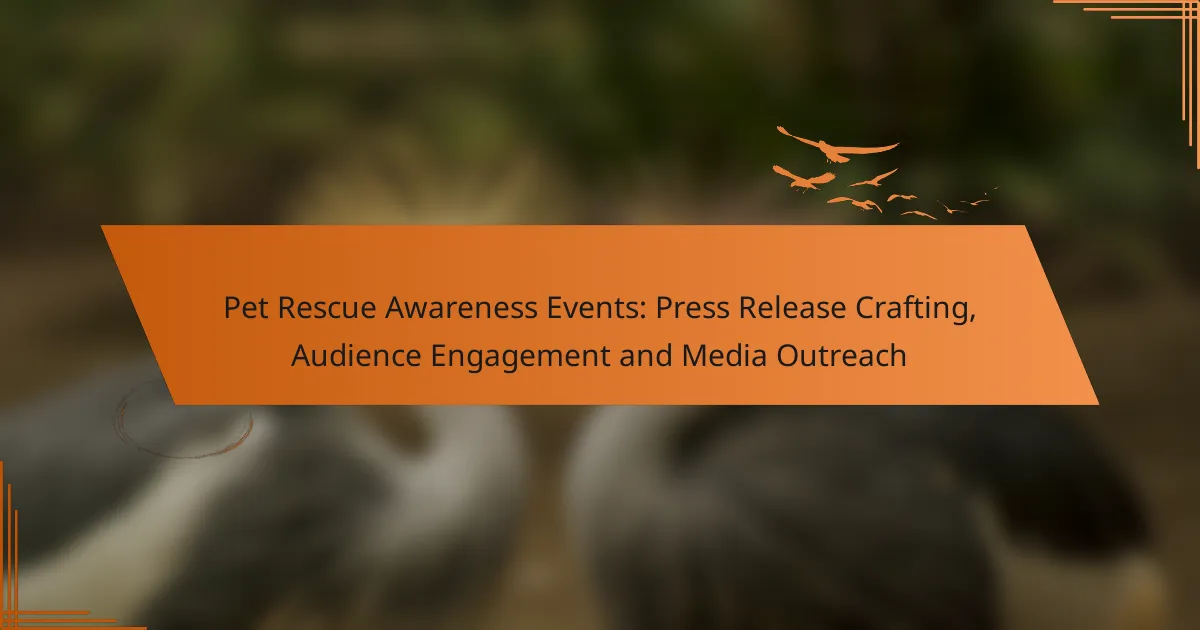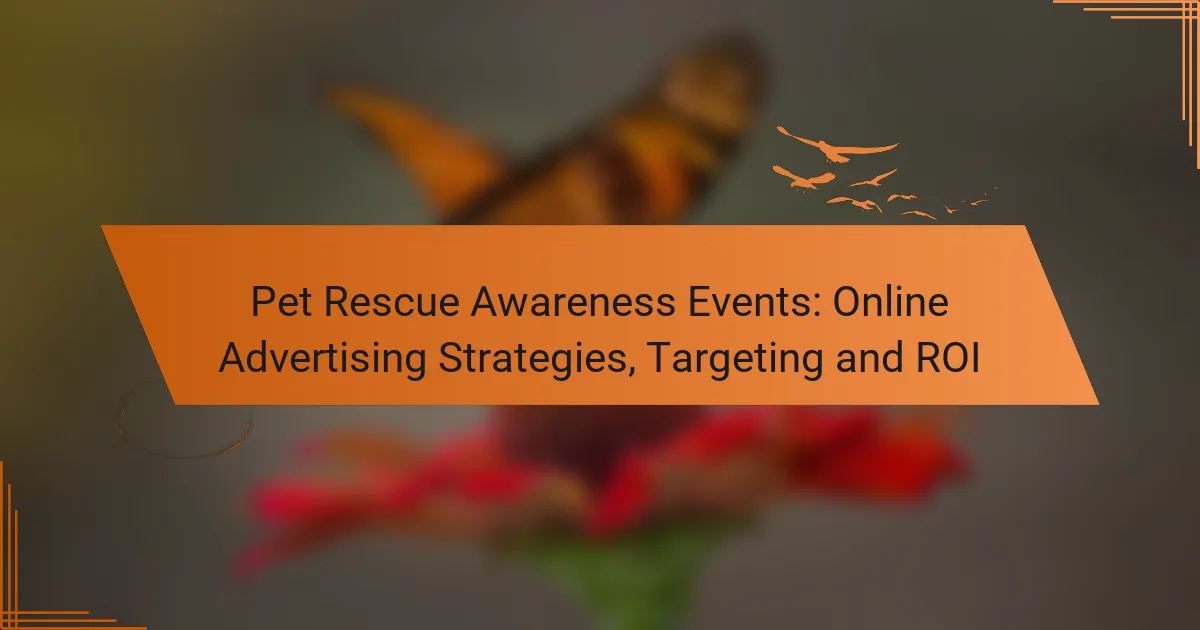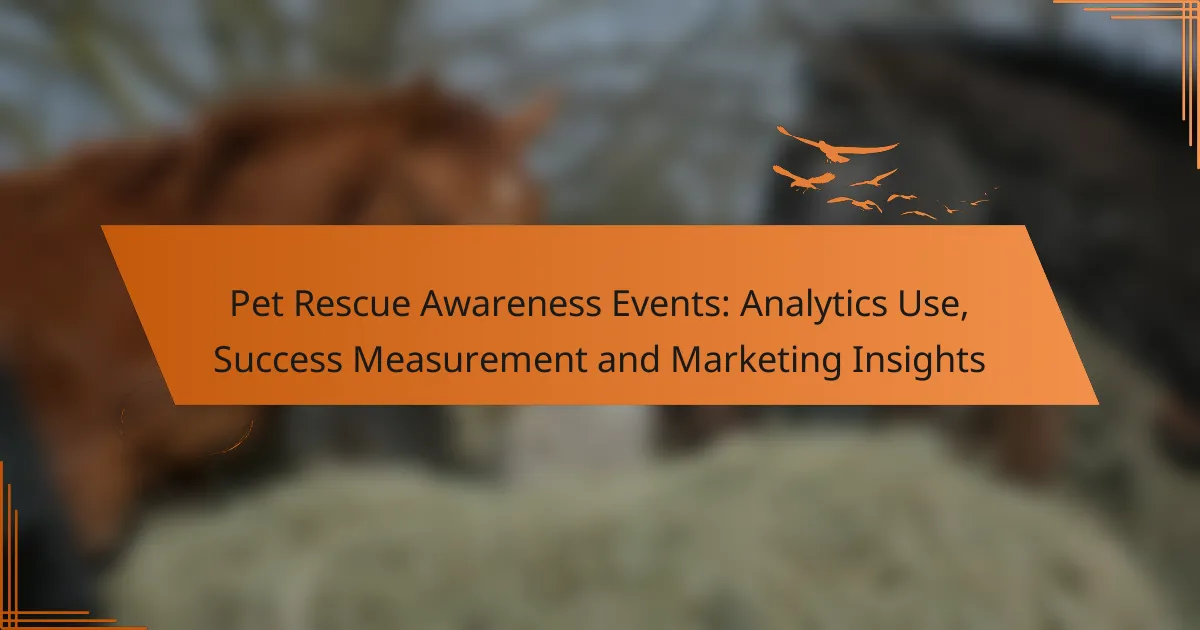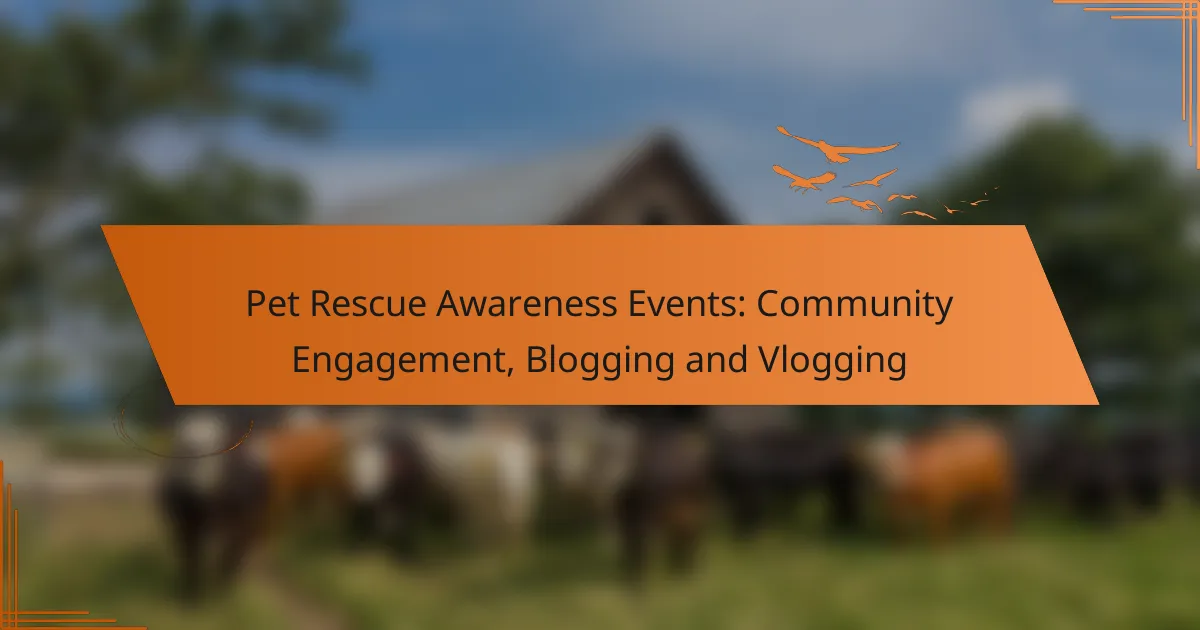Creating a compelling press release for pet rescue awareness events is essential for engaging the community and attracting media attention. By clearly communicating the event’s purpose and impact, organizations can encourage participation and support. Additionally, leveraging social media and collaborating with local influencers can enhance audience engagement and raise awareness about the importance of pet rescue initiatives.
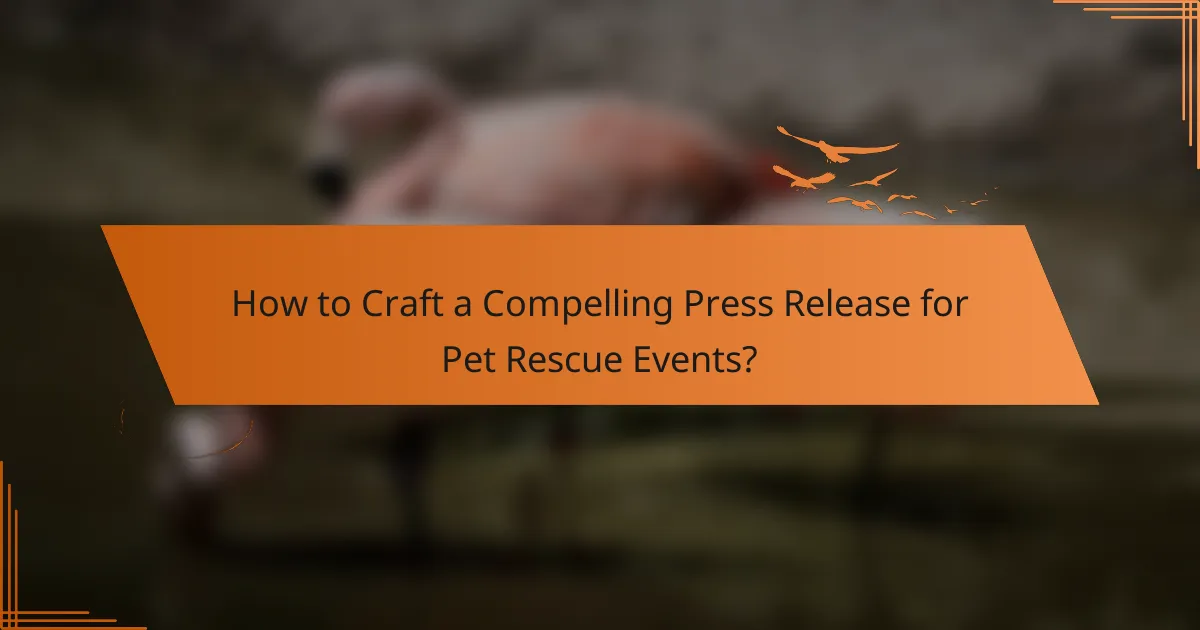
How to Craft a Compelling Press Release for Pet Rescue Events?
To create a compelling press release for pet rescue events, focus on clear messaging that highlights the event’s purpose, impact, and how the community can get involved. A well-structured press release can effectively engage media outlets and potential attendees, driving awareness and support for the cause.
Key components of an effective press release
An effective press release should include a catchy headline, a strong lead paragraph, and essential details about the event. Key components include the who, what, when, where, and why of the event, along with quotes from organizers or participants to add a personal touch.
Additionally, incorporating contact information and a call to action encourages readers to engage further. Make sure to highlight any partnerships or sponsorships that lend credibility to the event.
Best practices for formatting
Formatting your press release correctly can enhance readability and professionalism. Use a standard font like Arial or Times New Roman in 12-point size, and keep the document to one page if possible. Include the date at the top, and use bold for the headline and subheadings.
Utilize short paragraphs and bullet points to break up text and make key information stand out. Ensure that your contact details are clearly visible at the end, allowing journalists to reach out easily for more information.
Examples of successful press releases
Successful press releases often feature clear, engaging narratives that resonate with the audience. For instance, a press release announcing a pet adoption event might include heartwarming stories of pets finding homes, alongside statistics on adoption rates in the local area.
Another example could be a release promoting a fundraising gala, detailing how funds will directly benefit the rescue organization. Including quotes from beneficiaries or volunteers can further enhance the emotional appeal and encourage community involvement.
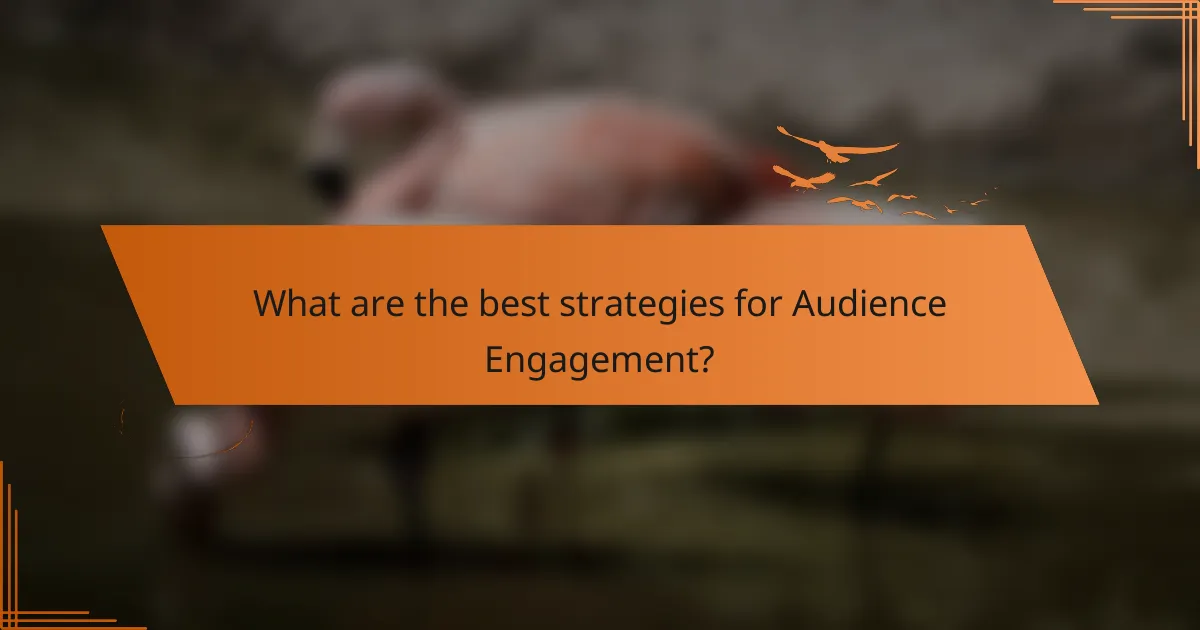
What are the best strategies for Audience Engagement?
Effective audience engagement strategies for pet rescue awareness events include leveraging social media, creating interactive content, and collaborating with local influencers. These approaches help to foster community involvement and raise awareness about pet rescue initiatives.
Utilizing social media platforms
Social media platforms like Facebook, Instagram, and Twitter are essential for engaging audiences in pet rescue events. Regular posts featuring adoptable pets, event updates, and success stories can create a sense of community and encourage sharing.
Consider using targeted ads to reach specific demographics, such as pet owners or animal lovers in your area. Engaging with followers through comments and messages can also enhance relationships and increase participation.
Creating interactive content
Interactive content, such as polls, quizzes, and live Q&A sessions, can significantly boost audience engagement. For example, a quiz about pet care can educate participants while promoting your event.
Incorporating user-generated content, like photo contests of pets, encourages followers to share their experiences and connect with your cause. This not only increases visibility but also fosters a sense of belonging among participants.
Collaborating with local influencers
Partnering with local influencers can amplify your message and reach a broader audience. Influencers who are passionate about animal welfare can share your events and encourage their followers to participate.
When selecting influencers, look for those with a genuine interest in pets and a strong local presence. A well-structured collaboration can include social media takeovers, joint events, or co-hosted giveaways to maximize impact.
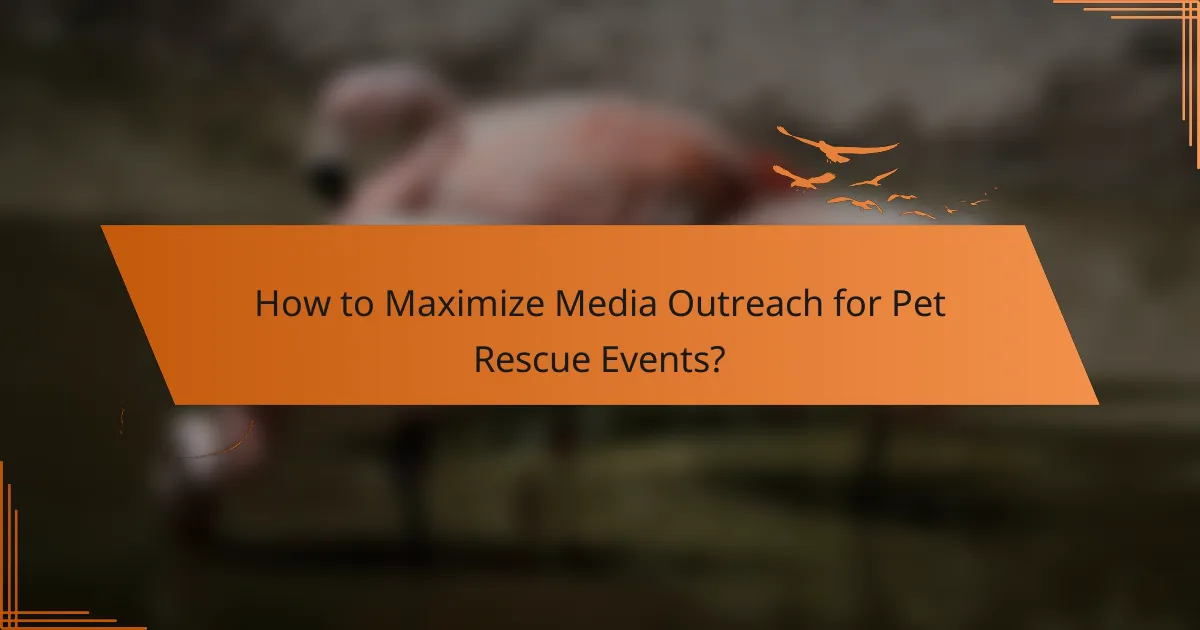
How to Maximize Media Outreach for Pet Rescue Events?
To maximize media outreach for pet rescue events, focus on identifying the right media contacts, building relationships with journalists, and crafting personalized pitches. These steps will enhance your visibility and engagement with the community, ultimately driving more support for your cause.
Identifying relevant media contacts
Start by researching local newspapers, radio stations, and online platforms that cover animal welfare or community events. Create a list of journalists who have previously written about pet rescue or related topics.
Utilize social media platforms like Twitter and LinkedIn to find and connect with these media professionals. Look for their contact information on their profiles or through their publication’s website to ensure you reach the right person.
Building relationships with journalists
Establishing relationships with journalists is crucial for effective media outreach. Attend local events where they might be present, and introduce yourself while sharing your passion for pet rescue. Personal connections can lead to more favorable coverage.
Follow up with journalists after your initial contact. Send them updates about your events or share interesting stories related to pet rescue. This consistent engagement can help keep your organization top-of-mind when they are looking for stories to cover.
Crafting personalized pitches
When reaching out to journalists, tailor your pitches to their specific interests and previous work. Highlight unique aspects of your pet rescue event that would resonate with their audience, such as special guest appearances or adoption success stories.
Keep your pitches concise and engaging. Use bullet points to outline key details and include a compelling subject line to grab their attention. Avoid generic templates; personalization shows that you value their work and understand their audience.

What metrics should be tracked for event success?
To evaluate the success of pet rescue awareness events, it’s essential to track metrics such as engagement rates on social media, media coverage, and attendance alongside donations. These metrics provide insights into how well the event resonated with the audience and its overall impact.
Engagement rates on social media
Engagement rates on social media reflect how actively participants interacted with your event’s content. This includes likes, shares, comments, and overall reach. Aim for engagement rates of 5-10% as a benchmark for successful posts.
To enhance engagement, create shareable content such as eye-catching images or compelling stories about rescue animals. Utilize hashtags relevant to pet rescue to broaden your reach and encourage user-generated content.
Media coverage and mentions
Media coverage and mentions indicate how effectively your event captured the attention of local news outlets and online platforms. Track the number of articles, blog posts, and social media mentions to gauge visibility. Aiming for at least 5-10 media mentions can signify good outreach.
To increase media coverage, send press releases to local newspapers, radio stations, and pet-related blogs. Highlight unique aspects of your event, such as guest speakers or special activities, to attract media interest.
Attendance and donations
Attendance and donations are critical indicators of an event’s success. Monitor the number of attendees compared to your goals, and track the total funds raised. A successful event typically sees attendance that meets or exceeds expectations, with donations reflecting the community’s support.
To boost attendance and donations, consider offering incentives like raffle prizes or matching donations from local businesses. Promote early registration discounts to encourage participation and ensure a higher turnout on event day.
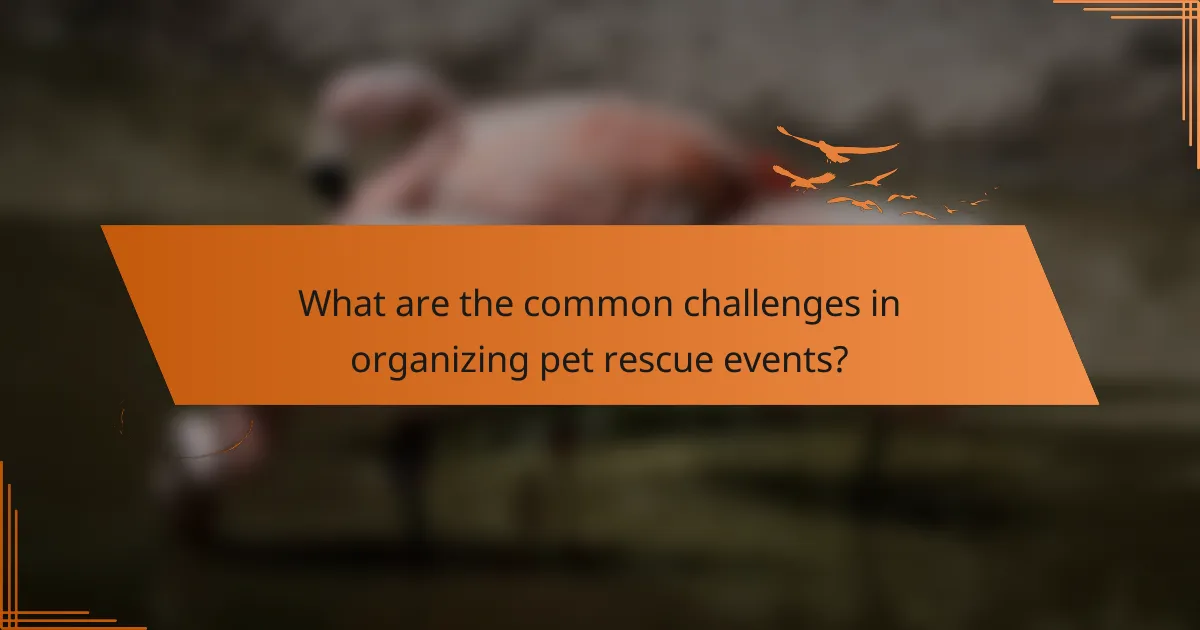
What are the common challenges in organizing pet rescue events?
Organizing pet rescue events often involves several challenges that can hinder success. Key issues include securing funding, managing logistics effectively, and recruiting volunteers to ensure smooth operations.
Funding and sponsorship issues
Securing adequate funding and sponsorship is a primary challenge for pet rescue events. Many organizations rely on donations, grants, and sponsorships from local businesses to cover costs such as venue rental, marketing, and supplies.
To address funding issues, create a detailed budget that outlines expected expenses and potential income sources. Approach local businesses for sponsorship opportunities, offering them visibility at the event in return for their support.
Logistical planning and execution
Logistical planning is crucial for the success of pet rescue events. This includes selecting a suitable venue, coordinating transportation for animals, and ensuring all necessary permits are obtained.
Consider creating a timeline that outlines key tasks leading up to the event. Engage with local authorities to understand any regulations that may apply, and ensure you have a contingency plan for unexpected issues like inclement weather.
Volunteer recruitment and management
Recruiting and managing volunteers can be a significant challenge for pet rescue events. Volunteers are essential for various roles, including setup, animal care, and guest assistance.
To attract volunteers, utilize social media platforms and local community boards to spread the word. Clearly define roles and responsibilities, and provide training sessions to ensure volunteers feel prepared and valued during the event.

How to leverage partnerships for better outreach?
Leveraging partnerships can significantly enhance outreach efforts for pet rescue awareness events. Collaborating with local entities can expand your audience and resources, making campaigns more effective and impactful.
Collaborating with local businesses
Partnering with local businesses can provide mutual benefits, such as increased visibility and shared resources. For example, a pet store might host an adoption event, promoting both the store and the rescue organization. Consider offering co-branded marketing materials to enhance visibility.
To maximize collaboration, establish clear goals and expectations. Create a checklist of tasks for both parties, ensuring that responsibilities are well-defined. This will help avoid misunderstandings and ensure a smooth partnership.
Engaging with animal welfare organizations
Working with established animal welfare organizations can amplify your outreach efforts. These organizations often have extensive networks and resources that can help promote your events. Reach out to local shelters or national groups to explore potential collaborations.
When engaging with these organizations, focus on shared missions and values. Develop joint campaigns that highlight the importance of pet adoption and responsible ownership. This alignment can lead to more effective messaging and greater community impact.
